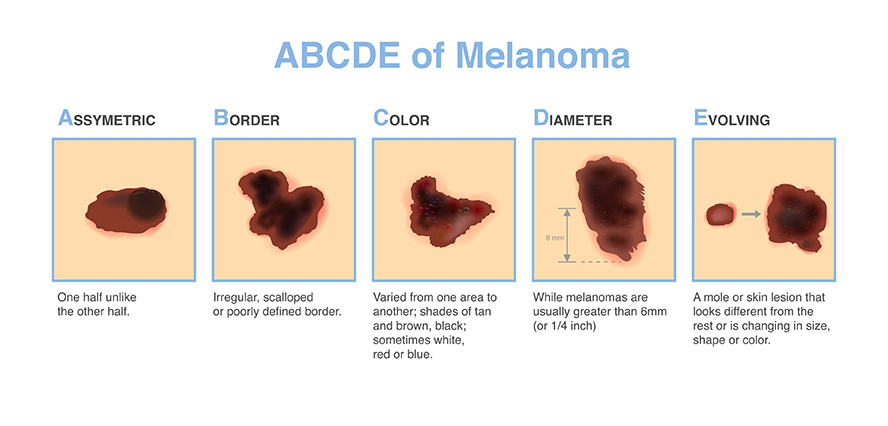- Chris Comans
- 3 Comments
By Skin ChX
Introduction
Skin cancer is one of the most common forms of cancer in Australia, and it’s particularly widespread here in Western Australia, where the climate and lifestyle combine to make sun exposure a part of everyday life. At Skin ChX, we’re on the frontlines of skin cancer screening, and we believe that understanding the real causes of skin cancer is key to prevention and early intervention.
There are many myths and half-truths about what causes skin cancer. The reality is, it comes down to one primary factor: exposure to ultraviolet (UV) radiation. But there’s more to it than just getting sunburnt. Here’s what every West Aussie needs to know.
1. The Main Cause: Ultraviolet (UV) Radiation
The overwhelming cause of skin cancer is UV radiation from the sun. WA’s sunny, clear skies may be beautiful, but they come with high UV levels nearly every day of the year, even in winter and on overcast days.
UV radiation isn’t visible or felt like heat. That’s why people often underestimate how much exposure they’re getting. You might not feel hot, but the damage to your skin cells can still be happening. Over time, this repeated exposure leads to DNA changes in the skin. When the body can’t repair that damage properly, it can result in abnormal cell growth, which is how skin cancer begins.
Types of Skin Cancer
This includes all forms of skin cancer:
- Basal Cell Carcinoma (BCC) – the most common but least dangerous.
- Squamous Cell Carcinoma (SCC) – more aggressive and can spread if untreated.
- Melanoma – the most dangerous form, with potential to spread rapidly if not caught early.
2. It’s Not Just About Sunburns
Many people associate skin cancer only with sunburns, but the truth is more complex. While severe sunburns, especially during childhood, significantly increase the risk of skin cancer, cumulative sun exposure over the years is just as damaging.
Daily incidental exposure, walking the dog, gardening, working outdoors, or driving with the window down, all add up. WA’s UV index regularly reaches “Very High” or “Extreme” levels. Even short bursts of unprotected time in the sun, repeated over many years, can significantly raise your risk.
3. Skin Type and Genetic Risk
Skin type plays a major role in skin cancer risk. People with fair skin, freckles, red or blonde hair, and light eyes have less melanin, which offers some natural protection from UV rays. This makes them more vulnerable to skin damage.
However, skin cancer doesn’t discriminate. It can affect people with any skin tone. That’s why no one should assume they’re “safe” from risk based on their complexion.
Family history can also increase your chances. If you have close relatives who have had melanoma or other forms of skin cancer, your risk is elevated. But even without a family history, anyone who spends regular time outdoors in WA’s strong sun needs to take prevention seriously.
4. The Role of Previous Skin Damage
Your skin has a long memory. Past damage from sunburns, chronic exposure, or scarring can lead to vulnerable areas where skin cancer is more likely to develop. This is especially true for people who’ve spent many years working outdoors, playing sport, or engaging in outdoor hobbies without adequate sun protection.
That’s why skin checks are so important. Even if you don’t currently see anything suspicious, skin cancers often start in places you can’t easily check yourself, like the back, scalp, or behind the ears.
5. WA’s Lifestyle Makes Sun Exposure Hard to Avoid
Living in Western Australia means embracing an outdoor lifestyle — beach days, camping trips, fishing, weekend barbecues, and long days on the job site. But it also means we’re exposed to some of the highest UV levels in the world. In summer, UV ratings in WA regularly exceed safe levels before 9am and don’t drop until after 5pm.
This makes regular protection essential, not just when you’re swimming or sunbaking, but every single day.
6. Prevention and Early Detection: What You Can Do
The good news is that most skin cancers can be treated successfully if caught early. That’s why regular checks with a qualified skin cancer screening practitioner are so important. At Skin ChX, we bring comprehensive, professional skin checks directly to workplaces and communities across WA.
We don’t just check. We also educate. Helping people understand what to look for, how to monitor their skin, and when to take action is a big part of what we do. Prevention starts with awareness, and that’s where we can make the biggest difference.
Final Thoughts
The real cause of skin cancer is clear: UV exposure. And in Western Australia, where sun exposure is part of the lifestyle, that makes awareness and action all the more important.
There’s no need for fear, just informed, consistent protection. Wear sunscreen daily, seek shade where possible, wear a hat and long sleeves, and most importantly, book regular skin checks with a trusted practitioner.
At Skin ChX, we’re committed to helping you stay ahead of skin cancer. Because when it comes to your health, knowledge truly is power.


Viruses, Immunity & Skin: When Body's Defences Falter | Skin CHX
Non-UV Skin Cancers: What They Are & How to Spot Them
Viruses, Immunity & Skin: When Body's Defences Falter